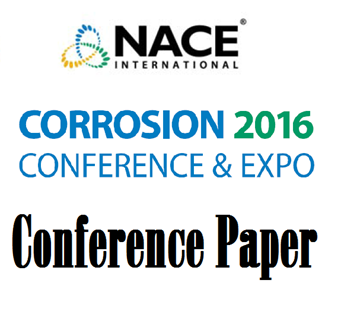Search
Maritime
View as
Sort by
Display
per page
11353 Timescale Correlation Between Marine Atmospheric Exposure and Accelerated Corrosion Testing
Product Number:
51300-11353-SG
ISBN:
2011 11353 CP
Publication Date:
2011
$20.00
15.5-Year Inspection Reveals the Effectiveness of a Single-Coat Epoxy
Product Number:
51322-17996-SG
Publication Date:
2022
$20.00
51316-6981-HISCC Resistance and Improvement Methods For Duplex and Super Duplex Stainless Steels
Product Number:
51316-6981-SG
ISBN:
6981 2016 CP
Publication Date:
2016
$20.00
51316-7024-High Temperature FBE Coating Disbondment in Multi-Layer PP Insulation Coatings
Product Number:
51316-7024-SG
ISBN:
7024 2016 CP
Publication Date:
2016
$20.00
51316-7058-Galvanic Series in Seawater as a Function of Temperature Oxygen Content and Chlorination
Product Number:
51316-7058-SG
ISBN:
7058 2016 CP
Publication Date:
2016
$20.00
51316-7070-Reliability Assessment Of Offshore Asset Under Pitting Corrosion
Product Number:
51316-7070-SG
ISBN:
7070 2016 CP
Publication Date:
2016
$20.00
51316-7109-Marine Crevice Corrosion Of Stainless Steel Alloys Under Biofilmed And Sterile Conditions
Product Number:
51316-7109-SG
ISBN:
7109 2016 CP
Publication Date:
2016
$20.00
51316-7322-Methodology for the comparative evaluation of batch biocide performance against microbial corrosion
Product Number:
51316-7322-SG
ISBN:
7322 2016 CP
Publication Date:
2016
$20.00
51316-7326-Estimation of Critical Localized Corrosion Potentials of Duplex SS with Galvele's Model
Product Number:
51316-7326-SG
ISBN:
7326 2016 CP
Publication Date:
2016
$20.00
51317--9364-New Developments in Coatings for Extended Lifetime for Offshore Wind Structures
Product Number:
51317--9364-SG
ISBN:
9364 2017 CP
Publication Date:
2017
$20.00
51317-9488-Development and Assessment of Environmentally-Friendly Corrosion Stain Remover for Navy Topside Coatings
Product Number:
51317-9488-SG
ISBN:
9488 2017 CP
Publication Date:
2017
$20.00
51317--9539-Durability of Nano-Coating for Marine Highway Bridge Application
Product Number:
51317--9539-SG
ISBN:
9539 2017 CP
Publication Date:
2017
$20.00












